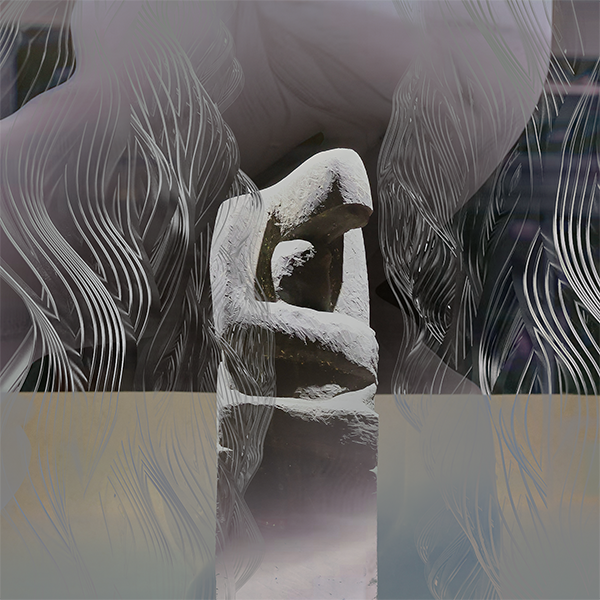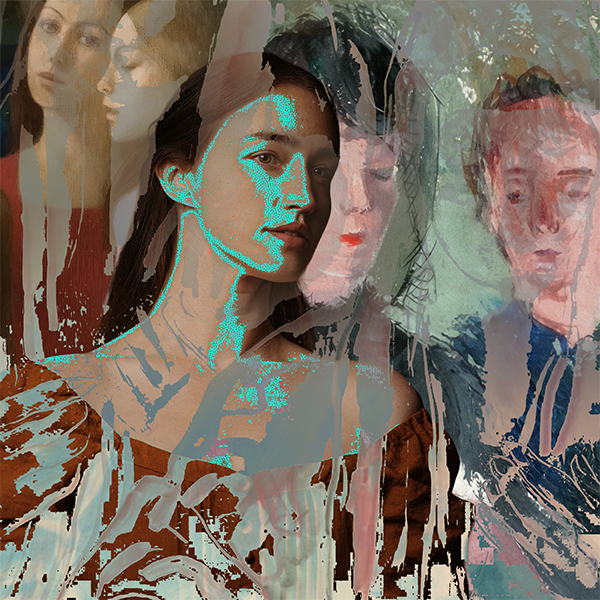On Idols and Doubts: Can Deconstruction Build a Stronger Faith?
In our social media-saturated world, we increasingly experience the very odd phenomenon of knowing people in digital, online mediums before we end up knowing them in person. Have you ever had this experience? You develop a digital friendship with someone over Twitter, Facebook, or Instagram before meeting them in person. Then when you finally do have the chance to meet this digital friend, you discover he or she looks way different in person compared to avatar or thumbnail. Or perhaps they are friendlier in person than they are on social media (or maybe just the opposite!).
These experiences reveal to us that there is a fundamental difference between knowing someone digitally and knowing someone in the flesh. Our virtual selves are versions of our true selves, often filtered, Photoshopped, and manicured. When we meet the real person, we have to adjust our understanding of him or her. We have to adjust in order to set aside our perception of the one-dimensional image in order to know a three-dimensional person.
The prophet Isaiah had such an experience. In Isaiah 6, the prophet sees the Lord with the train of his robe filling the temple. Isaiah observes seraphim encircling the Lord, praising their maker. They cry out in unison: “Holy, holy, holy is the Lord Almighty; the whole earth is full of his glory” (Is 6:3). The temple gates and thresholds shake at their song. Smoke fills the temple. Isaiah’s response? “Woe to me,” he cries. “I am ruined! For I am a man of unclean lips, and I live among a people of unclean lips, and my eyes have seen the King, the Lord Almighty” (v. 5).
Isaiah is shattered, broken, humbled. His experience shakes him to the core. The experience becomes Isaiah’s realization that he was called as a prophet to Israel. Now, there’s no reason to believe that Isaiah did not believe in God before this experience. Surely, he held beliefs about the Lord. Still, he had yet to experience in such a palpable way the one in whom he believed. Isaiah’s cognitive belief became an experiential reality in one fell swoop. No longer was God an intellectual belief, but an otherworldly being who Isaiah encountered in person. Experiences like Isaiah’s change one’s perception of God.
Isaiah first knew his theology. Then, he knew his Lord. And—based on his reaction—his two conceptions seem to have been entirely different from one another.
Dismantling Our Idols
Part of being a Christian is repenting of our bad theology. In the Christian tradition, we often speak of repentance (or, “changing the mind”) as a process of leaving our life of sin and selfishness as we turn toward Jesus the King. But repentance shouldn’t be limited to just stopping sin. Repentance can also include undoing or dismantling false images we have of God. Repentance requires idol-smashing.
Repentance shouldn’t be limited to just stopping sin. Repentance can also include undoing or dismantling false images we have of God. Repentance requires idol-smashing. Share on XWe know this from the Ten Commandments. The first commandment that Moses delivers is that Israel is to have no other god before them. The second? To not make an image of anything that might even look like God. But as Moses comes down Mt. Sinai, he finds all of Israel worshiping the golden calf. And who has led the idolatrous rebellion? The leader of Israel’s worship, Moses’s own brother: Aaron the priest.
The story drips with irony. First, Moses can’t even return to the people of God before the first two commandments are broken. And second, the worship of an idol is not a bunch of pagans worshipping creation. It is Israel’s worship leader Aaron leading Israel astray.
We are often tempted to worship our images of God more than the true God. Idolatry is easy. You construct an image of God, and then you step back and say, “That’s perfect!” But our ideas are never really perfect. Only God is perfect. Idolatry is a constant temptation among the faithful—to forge our love around what we think rather than passionately pursuing Yahweh. When our words become our gods, Paul writes, God will frustrate “the intelligence of the intelligent” (1 Cor 1:19). True faith journeys to Jesus, a journey that must take us through the first two commandments: worship God alone and renounce graven images. The order of these commands is instructive. Worship is first loving God, but worship also includes deconstructing any graven images. In order to love God properly, we must absolutely annihilate the false images we erect in his place, allowing God the freedom to shatter our thoughts of him.
In order to love God properly, we must absolutely annihilate the false images we erect in his place, allowing God the freedom to shatter our thoughts of him. Share on XLoving God or Loving Our Ideas of God?
When C. S. Lewis’s wife Joy died, he penned a book on suffering and loss called A Grief Observed. In one penetrating section, Lewis reflects on his “memory” of Joy. Lewis admits that he finds himself falling in love with his memories of Joy. He sees it almost as a kind of adultery, to love the memories of Joy more than Joy herself. Then Lewis applies this to theology. In our thoughts of God, Lewis writes, we often love our ideas of God more than God himself, which is a form of idolatry. Lewis writes:
I need Christ, not something that resembles Him. A really good photograph might become in the end a snare, a horror, and an obstacle. . . . Images of the Holy easily become holy images—sacrosanct. My idea of God is not a divine idea. It has to be shattered time after time. He shatters it Himself. He is the great iconoclast. Could we not almost say that this shattering is one of the marks of His presence? The Incarnation is the supreme example; it leaves all previous ideas of the Messiah in ruins.1
In Lewis’s words, God is the “great iconoclast” who shatters our theology so that we can stop loving our words about God more than God himself. Why is this important? This is important because idols aren’t real. They seem real in our own minds, but they are not. Idols will always disappoint us. Often, we confuse our idol with the real, living God. While one may doubt God’s existence entirely, it is often just our old image of God that is not working anymore. God does not betray us, but our image of God does so all the time. For a people as image-driven as the Israelites, being in the desert for 49 days without having something to see that they could worship would have been scary. The unknown would have caused them great trembling. So, they turned to something they could see—a golden calf.
Deconstructing Forgeries of the Gospels
There is a fundamental difference between doubting Jesus and doubting our images of Jesus. There is this intriguing little line at the very end of 1 John: “Little children, keep yourselves from idols” (1 Jn 5:21). Is John warning his readers not to worship actual cult statues? Perhaps. But there is good reason to read this as a metaphorical warning against buying into false Christianities and as an exhortation to deconstruct forgery gospels. A paraphrase might be: “Children, smash the idols of false images of Jesus and embrace the true Jesus.” Maybe we think, “Jesus has forgiven me, I don’t have to change my life.” But John says, “Confess your sins and be cleansed [by Jesus]” (1:9). Or we say, “Jesus died only for the people that agree with me.” But John says, “Jesus Christ…is the atoning sacrifice for our sins, and not for ours only but also for the sins of the whole world” (2:2). Whether in the first century or now two thousand years later, we face the powerful temptation to erect false images of Jesus. Macho Jesus. Liberationist Jesus. Life Coach Jesus. We are addicted to re-shaping Jesus into our image.
Whether in the first century or now two thousand years later, we face the powerful temptation to erect false images of Jesus. Macho Jesus. Liberationist Jesus. Life Coach Jesus. We are addicted to re-shaping Jesus into our image. Share on XWhen we experience disappointment with our Christian faith or the Christian church, it may be that our doubts are signaling the divine conscience within us, exposing the gap between false images of Jesus and the real thing. In those moments, precisely when we want to walk away, we frustrated sheep need to close our eyes, cancel out as much “noise” as we can, and listen for the voice of the Good Shepherd (Jn 10:1-21). He wants us to do something with our doubts but not walk away. He wants us to walk toward him, his real voice, his real person, the one we meet in the gospels, the one we meet by faith, testified by the apostles, and illuminated in Scripture.
Jesus, that wild, free, loving, passionate, will-not-be-domesticated Aslan, is to be trusted. Always. But sometimes our images of Jesus betray us. Sometimes, one of the most important things we can do is doubt our images and words about Jesus so that we might actually love Jesus more. This does not mean we refuse to do theology or think about Jesus. It just means we hold these theologies with a posture of open-handedness. Then, like Isaiah, when we see God face-to-face, we’ll be able to throw aside our thoughts of him as we fall at his feet.
[1] C. S. Lewis, A Grief Observed (New York: HarperCollins, 2001), 65–66 (emphasis added).



